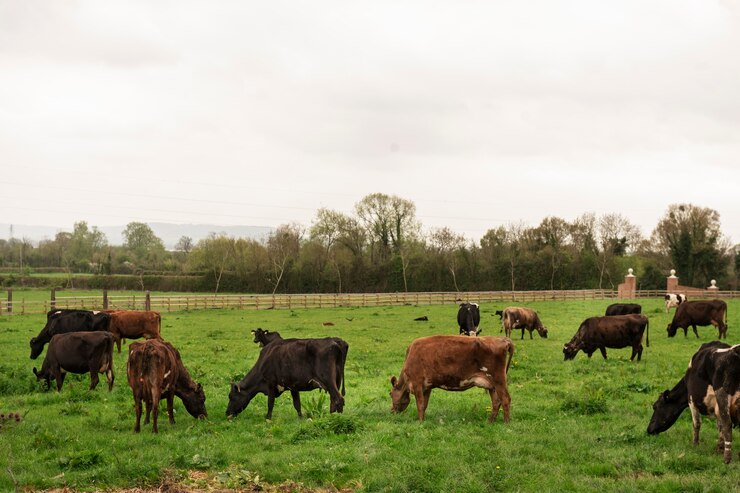Agriculture has long been a cornerstone of Namibia’s economy. With vast rural areas dedicated to livestock farming, crop production, and agro-processing, agribusiness plays a crucial role in shaping the nation’s economic future. In 2024, Namibia’s agribusiness sector is at a pivotal crossroads—while it holds significant potential for growth, it faces several challenges, including environmental constraints, access to markets, and the need for modernization. In this article, we explore the current state of Namibia’s agribusiness, focusing on the challenges it faces, the opportunities available, and the strategic initiatives that are shaping the sector’s future.
1. Overview of Namibia’s Agribusiness Landscape
Namibia’s agribusiness sector is characterized by a combination of large-scale commercial farming and subsistence farming. Agriculture contributes around 10-15% of the country’s GDP, with the majority of agricultural activity focused on livestock farming, which includes cattle, sheep, and goats. Crop farming, although less dominant, is also an important contributor, especially in areas such as maize, millet, wheat, and grapes.
Livestock Farming: The Backbone of Agribusiness
Namibia’s livestock sector has long been a key component of the country’s agribusiness. The country is renowned for its high-quality beef, which is exported to major international markets such as Europe, South Africa, and the Middle East. Cattle farming is the largest segment of Namibia’s agricultural industry, and the country has a strong tradition of pastoralism, with many farmers utilizing extensive grazing systems.
The government has also focused on improving livestock productivity through better management practices, breeding programs, and disease control measures, which are essential to maintaining the quality of Namibia’s beef and ensuring that it meets international standards.
Crop Farming: Complementary but Vital
While livestock farming dominates the agricultural landscape, crop farming also plays an important role in Namibia’s agribusiness. The country produces a variety of crops, including maize, millet, wheat, and horticultural products like fruits and vegetables. Crops are primarily grown in the northern and central regions of Namibia, where more fertile soils and favorable rainfall patterns make agriculture viable.
However, the country’s semi-arid climate poses challenges for crop production, with erratic rainfall patterns and prolonged droughts affecting yields. Despite this, crop farming remains vital for domestic food security and is an area where agribusiness can make a significant impact, especially with the right investment and technologies.
2. Challenges Facing Namibia’s Agribusiness Sector
While Namibia’s agribusiness sector holds immense potential, it faces several challenges that hinder its growth. These challenges must be addressed to ensure long-term sustainability and to unlock the sector’s true potential.
Climate Change and Water Scarcity
Namibia’s climate is semi-arid, and it experiences frequent droughts and irregular rainfall. Climate change is exacerbating these challenges, resulting in reduced crop yields and stressed livestock populations. Water scarcity is one of the most significant challenges, especially in rural areas where access to water for irrigation and livestock is limited.
The impact of climate change on Namibia’s agribusiness is particularly evident in the country’s northern regions, where crop farming is most prevalent. Irregular rainfall patterns and recurring droughts not only reduce crop production but also lead to water shortages for both livestock and farming. The 2020-2021 drought, for example, caused severe losses in livestock and crop yields, highlighting the vulnerability of the sector to climate-related shocks.
Land Degradation and Soil Fertility
Land degradation is another challenge that threatens the long-term sustainability of Namibia’s agribusiness. Overgrazing, deforestation, and improper agricultural practices have led to soil erosion, reducing the productivity of the land. This is particularly concerning for livestock farmers who rely on natural grazing land, as overgrazing and land degradation diminish the available pasture and contribute to desertification.
Soil fertility is also a concern for crop farmers, especially given Namibia’s limited rainfall. Inadequate soil management practices, including insufficient fertilization and crop rotation, lead to declining soil health, which impacts crop yields. If not addressed, land degradation could have long-lasting effects on Namibia’s agricultural productivity.
Access to Finance and Modern Technology
Access to financing remains a significant barrier to growth for many agribusinesses in Namibia. Smallholder farmers, in particular, face challenges in obtaining affordable credit for investment in modern farming equipment, irrigation systems, or inputs like seeds and fertilizers. Without access to capital, farmers are often forced to rely on traditional, less efficient methods of farming that hinder productivity and growth.
Additionally, the lack of access to modern agricultural technologies, such as precision farming tools, irrigation systems, and biotechnology, limits the potential for increased productivity and efficiency. While some larger commercial farmers are able to invest in technology, many small-scale farmers lack the resources to adopt these innovations.
Market Access and Infrastructure Constraints
Market access is another challenge for Namibia’s agribusiness sector. While Namibia has a growing export market for beef, it faces competition from other agricultural exporters in the region, such as South Africa and Brazil. Additionally, logistical barriers, such as limited infrastructure in rural areas, can impede the movement of goods from farms to markets, both domestically and internationally.
Transportation costs, inefficiencies in the supply chain, and the lack of cold storage facilities in certain areas can lead to delays and spoilage of perishable products, such as fruits, vegetables, and dairy. This makes it difficult for farmers to take advantage of market opportunities, both within Namibia and in regional and international markets.
3. Opportunities for Growth in Namibia’s Agribusiness Sector
Despite these challenges, Namibia’s agribusiness sector also presents significant opportunities for growth. Several factors make the sector attractive to investors and entrepreneurs alike.
Sustainable Agriculture and Climate-Smart Practices
In response to the challenges posed by climate change, there is growing interest in sustainable agriculture practices in Namibia. Climate-smart agriculture, which includes techniques such as water-efficient irrigation systems, drought-resistant crops, and agroforestry, offers a promising solution to improve productivity while conserving resources.
By adopting climate-smart practices, Namibia’s agribusiness sector can build resilience to climate shocks, reduce its environmental footprint, and ensure food security for the growing population. The government has introduced programs aimed at promoting sustainable agriculture, including support for conservation farming techniques and the development of drought-tolerant crop varieties.
Agro-Processing and Value-Added Products
One of the most significant opportunities for Namibia’s agribusiness sector is the expansion of agro-processing. By adding value to raw agricultural products, such as meat, fruit, and vegetables, Namibia can increase its exports, create jobs, and reduce its reliance on raw commodity exports. Agro-processing industries can range from meatpacking and dairy processing to fruit canning and packaged products.
The development of local agro-processing facilities also holds the potential to reduce post-harvest losses and provide a steady supply of food products for domestic consumption. With the right investment in infrastructure and technology, agro-processing could become a major driver of economic growth in Namibia’s rural areas.
Diversification of Agricultural Production
Diversifying agricultural production is another important opportunity for Namibia’s agribusiness sector. While livestock farming remains dominant, crop farming, particularly in high-value products such as grapes, horticultural crops, and organic products, offers significant potential for growth. There is also growing demand for niche products like organic vegetables and specialty fruits, which could be met through sustainable and diversified farming practices.
Additionally, aquaculture and small-scale poultry farming offer new avenues for agricultural diversification. With an expanding middle class and rising demand for protein sources, these industries present opportunities for smallholder farmers to diversify their income streams and improve food security.
Regional and Global Trade Opportunities
Namibia’s strategic location, particularly its access to the Port of Walvis Bay, provides significant opportunities for expanding agricultural exports to regional and global markets. Namibia already exports beef and fish to major markets, but there is room for growth in other sectors, such as wine, horticultural products, and processed foods.
The African Continental Free Trade Area (AfCFTA), which aims to create a single continental market for goods and services, offers new trade opportunities for Namibia’s agribusiness. By increasing intra-Africa trade, Namibia can tap into larger regional markets, boosting demand for its agricultural products.
4. Government Initiatives and Support for Agribusiness Growth
The Namibian government has recognized the importance of agribusiness to the country’s economy and has introduced several initiatives to support the sector. The National Agriculture Policy aims to promote sustainable and inclusive agricultural growth, with a focus on improving productivity, food security, and environmental conservation.
Additionally, the government has prioritized infrastructure development, including the improvement of roads, irrigation systems, and storage facilities, which will enhance the efficiency of the agricultural supply chain. The establishment of funding programs and grants for farmers is also part of the government’s efforts to improve access to capital for agribusinesses.
Namibia’s agribusiness sector is at a critical juncture. While it faces significant challenges, such as climate change, water scarcity, and limited access to technology and finance, the sector also presents considerable opportunities for growth and diversification. By embracing sustainable agricultural practices, expanding agro-processing, and increasing market access, Namibia can unlock the full potential of its agribusiness sector and secure a prosperous future for its rural economy. With continued investment and support, Namibia’s agribusiness can play a key role in driving economic growth and improving food security in 2024 and beyond.
Join 'Namibia Today' WhatsApp Channel
Get the breaking news in Namibia — direct to your WhatsApp.
CLICK HERE TO JOIN












